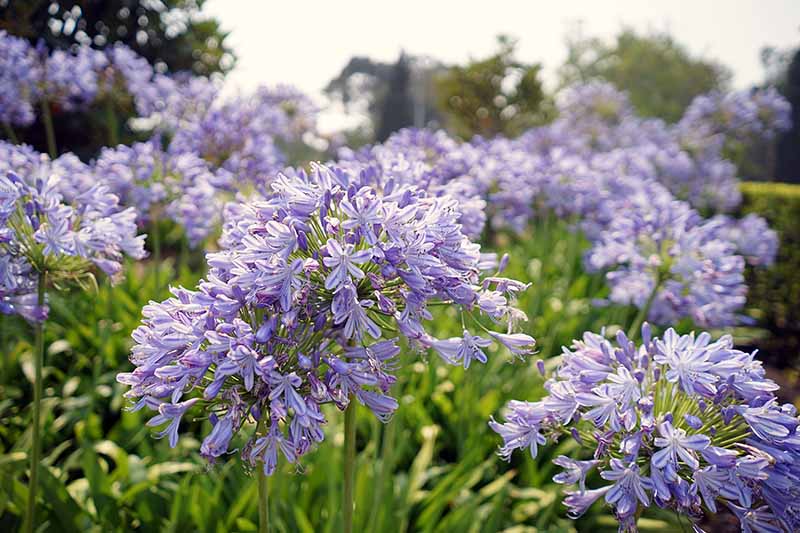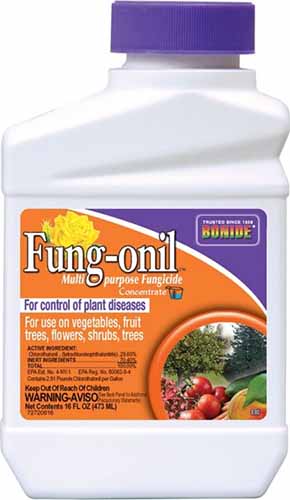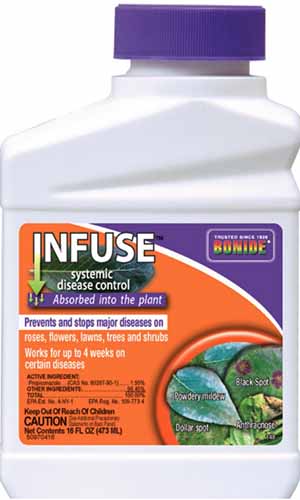As a child growing up in Delaware, I was always fascinated by agapanthus, a plant I was only familiar with from ogling books filled with pretty pictures of different flowers.
I still vividly remember my excitement on my first trip to California when I saw them growing outside, with their rounded flower heads and long, strap-like leaves.
And now, I am fortunate to live in Zone 9b, where I can grow them in my own garden!

We link to vendors to help you find relevant products. If you buy from one of our links, we may earn a commission.
Agapanthus plants are generally resistant to most pests and diseases.
So resistant, in fact, that if you search the scientific literature for common pathogens that infect them, you mostly find articles relating to their production of antifungal chemicals.
In their native South Africa, scientists study extracts from agapanthus plants as potential controls for a variety of plant diseases.
In our guide to growing agapanthus, we cover how to cultivate these easy-care ornamentals in the garden. They thrive in a full sun location with organically-rich, well-drained soil.
But what happens when things go wrong?
Certain growing conditions can predispose agapanthus to a few diseases, and in this article I will cover five of the most common:
Common Agapanthus Diseases
1. Anthracnose
If you are in the habit of reading about plant diseases, there is a good chance you are familiar with anthracnose – a serious disease in plants such as hydrangeas, caused by an ubiquitous worldwide group of pathogens in the Colletotrichum genus.
These fungi are very common in humid temperate climates – waiting to strike when environmental conditions are right. Overwatering and too much moisture on the leaves can contribute to this infection.
Symptoms include brown spots on the leaves that can sometimes have purple edges. In the case of a severe infection, the spots turn black as the tissue dies and foliage can turn yellow, eventually dropping from the plants.
Since the fungus spreads easily via infected plant tissue, immediately prune the affected foliage and dispose of the debris somewhere other than on your compost pile!
Remember to disinfect your pruning shears as you go to prevent spreading the infection to other plants. You can use 70 percent rubbing alcohol or 10 percent bleach.
Applying a layer of mulch can prevent the spores from splashing from the ground onto the foliage of your plants.
If your plants have a serious infection, with a large amount of foliage affected, you may need to apply a fungicide, since the disease could potentially kill your plant – or spread to other ornamentals.
You have several options, fungicides containing maneb, chlorothalonil, copper, or sulfur are effective.
If you want to order online, you can buy chlorothalonil from Tractor Supply as Bonide Fung-onil Concentrate.
You will need to spray the plants every 10-14 days, according to package instructions.
An organic option for fungal control is a copper-based fungicide.
Arbico Organics offers a current formulation of the traditional Bordeaux mixture as Bonide Copper Fungicide Dust. Apply every week to 10 days during dry conditions, according to package instructions.
It is a good idea to alternate the fungicide that you use, so the fungi won’t develop resistance. Learn more about how to rotate fungicides in our guide.
2. Gray Mold
Also known as Botrytis blight, the dreaded gray mold (Botrytis cinerea) is a potentially devastating disease, typically appearing when the weather is cool and humid.
It usually only affects agapanthus plants that are in shady locations and those that are overwatered, or planted in soil that doesn’t drain well.
This pathogen is widespread and has an enormous host range, so there is a good chance that it is present in your plant’s environment if you live in a humid location.
Symptoms start as a gray, fuzzy mold on the leaves, flower stalks, flowers, and buds. The fungus forms a film over the top of the infected portion, and the leaves may become slimy and eventually fall off.
Your first step is to remove all of the infected tissue and purge it from your garden, so it won’t spread spores.
Unfortunately, this fungus is known for rapidly developing resistance to fungicides – often in the same season that a new chemical is introduced.
As soon as you notice symptoms, you’ll need to treat your plants with a fungicide – but first you should check with your local extension service to find out what fungicides are recommended for use in your area.
The University of Florida’s IFAS Extension recommends growing resistant varieties of agapanthus if you live in a humid climate such as Florida.
3. Leaf Spot
A number of fungi throughout the world have been found to cause leaf spots on agapanthus plants. While these are not typically fatal, they can cause unsightly discoloration on the foliage.
One of the more common fungal infections is red leaf blotch disease, caused by Stagonospora curtisii (Phoma narcissi). This fungus is primarily known as a pathogen of Hippeastrum amaryllis plants grown in gardens, but it can also infect agapanthus.
It causes streaks of red or reddish-brown blotches on the leaves.
This fungus is not usually fatal and can easily be treated with the fungicide thiophanate-methyl.
Bonide Infuse™ Systemic Disease Control
You can buy thiophanate-methyl as Bonide Infuse™ Systemic Disease Control from Home Depot.
This fungicide is absorbed by the roots, protecting the plant systemically. Apply according to package instructions when you first see signs of the disease.
Repeat every 14 days as needed.
Other species of fungi that have been found to cause leaf spots on agapanthus plants throughout the world include:
- Macrophoma agapanthus
- Phomopsis agapanthi sp. nov
- Septoria agapanthi sp nov
- Devriesia agapanthi
Most of these will resolve on their own without any need for treatment, but you can choose to apply a fungicide such as chlorothalonil (see our recommendation above).
4. Powdery Mildew
As with many other plants, agapanthus that is grown in shady spots may contract powdery mildew, known for the white, powdery coating it causes on the leaves.
Caused by hundreds of different species of fungi, powdery mildew can be a devastating disease on some plants, but thankfully it is not a common problem on agapanthus.
Fortunately, there are a number of home remedies you can use to treat this disorder.
5. Root Rot
A number of different fungi and water molds (Oomycetes) can cause root rot.
Fortunately, you can usually preempt this disorder by ensuring that your plants have good drainage and are not overwatered. Saturated, waterlogged soil deprives the roots of oxygen, and in their weakened state, they are vulnerable to attack.
Plants affected by root rot may display stunted growth or wilting foliage, but in many cases they won’t present any symptoms until it’s too late to save them.
You may not know your agapanthus is infected until it collapses and dies. Dead plants should be uprooted and discarded.
Agapanthus Is Usually the Aggressor
Unlike many plants that have to be babied, agapanthus is typically disease-resistant and even produces antifungal compounds that are currently the subject of research.

Additionally, it grows so well in some locations that it is sometimes considered a weed!
You can avoid most diseases by planting in full sun, providing good drainage, and watering at the base of the plant instead of on the leaves.
However, if you live in a humid area, you may have to plant varieties that are resistant to gray mold.
Have you battled a disease on your agapanthus plants? If so, let us know in the comments section below!
And for more information about growing agapanthus in your garden, check out these guides next:
- 25 of the Best Agapanthus Varieties for Your Garden
- Tips for Growing Agapanthus Flowers in Containers
- How to Care for Agapanthus Plants in Winter
© Ask the Experts, LLC. ALL RIGHTS RESERVED. See our TOS for more details. Product photos via Arbico Organics, Home Depot, and Tractor Supply. Uncredited photos: Shutterstock. With additional writing and editing by Clare Groom.







Dear Dr George, I have recently divided my enormous Agapanthus plants (yesterday) and notice that there were whitish blotches within the leaves. I say within, as opposed to being on the leaf surface. One of my sisters said this was a sign of a viral disease. These plants are old fashioned variants that probably date back to WW2. They stand at least 5ft tall when in flower and are huge when compared to today’s smaller hybrids. The plants had not been divided for at least 20 years (sorry ’bout that!) and the clumps were enormous. I live in Johannesburg, South… Read more »
Hi Mrs. Pycraft, I envy you your Agapanthus plants! They sound delightful. If it makes you feel any better, I have some very large plants in pots that haven’t been divided since I obtained them in 1993. There are several viruses that can infect Agapanthus, but they usually show streaks or blotches on the surface of the leaves. I’ve never heard of blotches within Agapanthus leaves that don’t show external symptoms. Your sister might be right, though. Are they blooming? Some Agapanthus viruses show symptoms on the flowers. I’m sorry I can’t be more definitive. I would keep a close… Read more »
I have masses of agapanthus plants and in the last couple of years they are getting like bubbling on their leaves?
Hi Fran, any chance you could share a picture of what the leaves look like?
I’ve started agapanthus from seed once before without any problems. This time, my seedlings are struggling. At first, it was green dots that eventually decayed. Maybe frost damage? We shifted house, and the temps are cooler here during winter. Frost doesn’t affect my mature plants. Now the seedlings have reddish dots. I’ll try to attach photos. Am I dealing with a fungal issue? I also have many spider plants near them, and something reddish in colour has infected them. I live in Australia .
Leaf spot and rust are fungal diseases with symptoms similar to what’s in your photos, and seedlings are particularly prone to disease issues, especially if they are watered from overhead. It’s important to water only at the soil level, to prevent sprinkling the leaves. When water pools on the foliage, especially in cool temperatures where it may not evaporate quickly, opportunistic fungi may come out to play. Rather than attempting to treat your seedlings, it may be best to give new seeds a fresh start, so they’ll have the best chances of growing to be healthy mature plants. Given proper… Read more »
Hello. I hope you can help me. I recently brought an agapanthus plant from a nursery. I have never grown them before. And I noticed that they have one or two yellow leaves. They are in doors. Should I take them outside from a while during the day. To get some sun? Thank you in advance
How is your plant doing now, Micaela? Apologies for our delayed reply! The shock of a move to a new location with a different temperature, amount of light, and watering routine than the plant is used to can often result in a few lost leaves. But yellowing leaves may also be a sign of over- or underwatering – and many of us are guilty of killing our plants with kindness. Be sure that they have the conditions they need to thrive indoors, with plenty of sun, and adequate water without overdoing it. If you have not already, it’s always a… Read more »
Hi I have two flower beds where I planted agapanthus, but they keep getting fungus , have tried to spray with antifungus liquid, they won’t grow and they are still dying , 🙁 have spend hundreds of $,
Before the Agapanthus there were ferns in the flowerbeds. What can I do ??
I am desperate , would love to have Agapanthus growing up my driveway.
Thanks heaps if you can help .
Kind regards Betina
What type of antifungal spray have you used, and can you identify the type of fungus that is affecting your plants? What symptoms do you see? Certain pathogens can develop resistance to repeat fungal treatments, and the products that you use should be rotated to avoid this. Though these plants can tolerate some shade, agapanthus loves full sun and well-draining soil. Most ferns, on the other hand, thrive in shady, moist locations – and so do fungal pathogens. Though plants that are dying or that have already died should be removed and disposed of to prevent further spread of the… Read more »
Hello from South Africa,
my agapanthus bloom wonderfully every year, but the foliage turns yellow, weak and mushy from the bulb. Looks like they are fowling from the stem. Can’t find any worms or insects. Sprayed them with anti fungus several times – unfortunately without any visible result. The only thing that keeps me from taking them all out is the fact that they still bloom in full beauty. ????!
Hi Dr. George, I love my Agapanthus, I live in zone 8 (Central Texas) and recently purchased this beautiful plant. It’s the Queen Anne Agapanthus. It is super hot in central Texas, about 100 degrees. I planted my plant in partial sun due to the typical “hot” days. It receives evening time sun. It bloomed this year, yay! Beautiful stalks with violet colored blooms, plentiful. I just now noticed that the flower petals have all but fallen off, and it makes me very sad. What have I done wrong? How do I fix this? Very novice gardener, any help would… Read more »
Hi Robyn, they sound lovely, ‘Queen Anne’ is a beautiful cultivar. Since this particular cultivar usually blooms through at least July, the spent flowers should be replaced by new ones. If that’s not happening, it could be any number of things, from pests or diseases to the wrong environmental conditions (too much water or shade, for instance). Do you have multiple plants? Are they all failing to bloom? Examine your plant closely for yellow leaves or insects. Let us know what you find.
Hello I’m new to gardening and my husband and I have planted agapanthus in a huge pot just exactly one week ago, and now they are looking terrible. The leaves are turning yellow and the flowers are starting to wilt and dry out. I don’t know what we’re doing wrong. We water everyday and they are planted in a full sun area. We live in Apple Valley, CA. Is there anything you can suggest? I feel so discouraged.
I’m sorry to hear that, it’s super frustrating when our plants fail. Because the leaves started yellowing and the leaves wilted so soon after planting, I have a few guesses. First, I’m assuming that your pot has drainage and that the drainage holes aren’t blocked. If so, it’s likely not a disease, so that’s encouraging, but it’s possible that you are either overwatering or underwatering. Just stick a finger in the soil. Agapanthus doesn’t mind some drought, so you want to aim for underwatering rather than overwatering. If the soil feels wet at all up to your second knuckle, it’s… Read more »
My agapanthus had been healthy for months and have started to die. I have lost two plants altogether. I am not sure if it’s root rot, bulb rot, a fungus, etc. Any help would be appreciated. I live in South Florida and these plants get morning sun. They’ve been under irrigation, but I’ve cut that off recently since we get rain every day or two. Any ideas of what this might be and how to fix it?
Sorry…I can’t get pictures to upload directly…so I’ve linked them below.
Picture 1
Picture 2
Picture 3
One note. In other plants, part of the plant has stayed green (with brown tips) while the other section has died all the way back. Thank you so much for your help!
Overwatering that has lead to root rot seems like the most likely culprit. Dig up a plant to see what’s going on underground, and trim away any rotten portions if you can. Plants that are too far gone will need to be discarded. Do what you can to cut down on overwatering in the area and improve drainage in the future.
Fortunately agapanthus is a pretty tough and resilient plant that spreads easily, so you can divide rhizomes from healthy plants to replace those you’ve lost and fill in that portion of the garden again once conditions have improved.
Please can you tell me how to get rid of grey mold on my agapanthus, they are coming out of the soil and leaves are going yellow.
Hi Glynis, grey mold is a pretty challenging disease to deal with. Your best bet is to alternate fungicides. Start with something that contains Bacillus subtilis like Cease, available from Arbico Organics. Then, a week later, spray with a copper fungicide. Wait two weeks and start with the Cease again. Repeat until symptoms subside.
Meanwhile, you need to address the conditions that promote this disease. That means improving air circulation, soil drainage, and light exposure. Grey mold thrives in dark, moist areas with poor soil drainage.